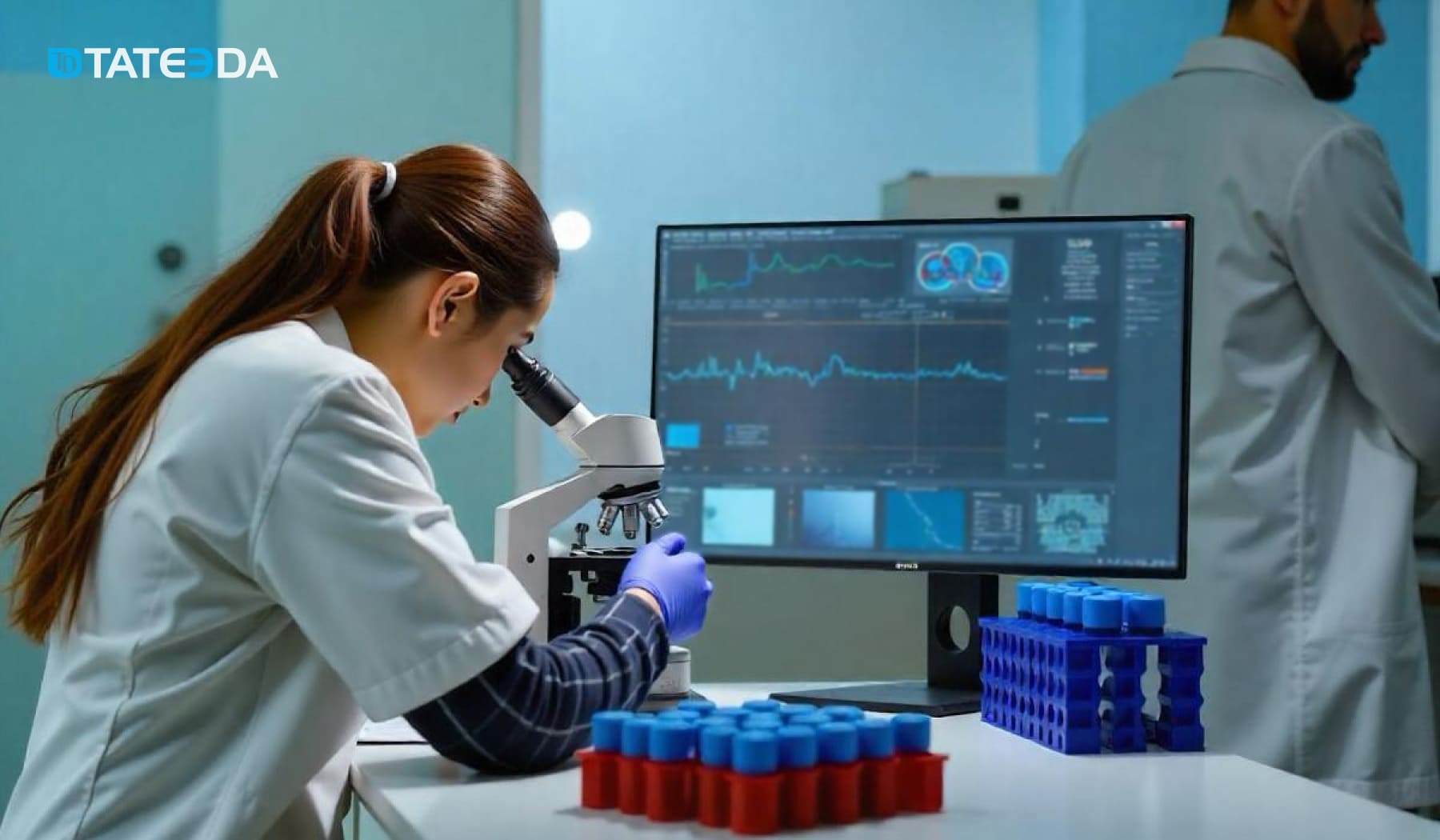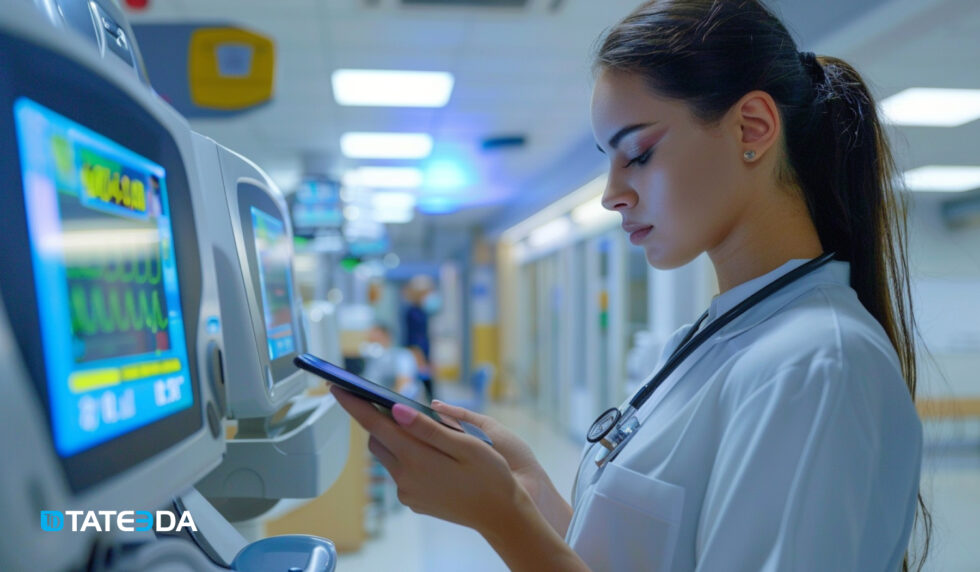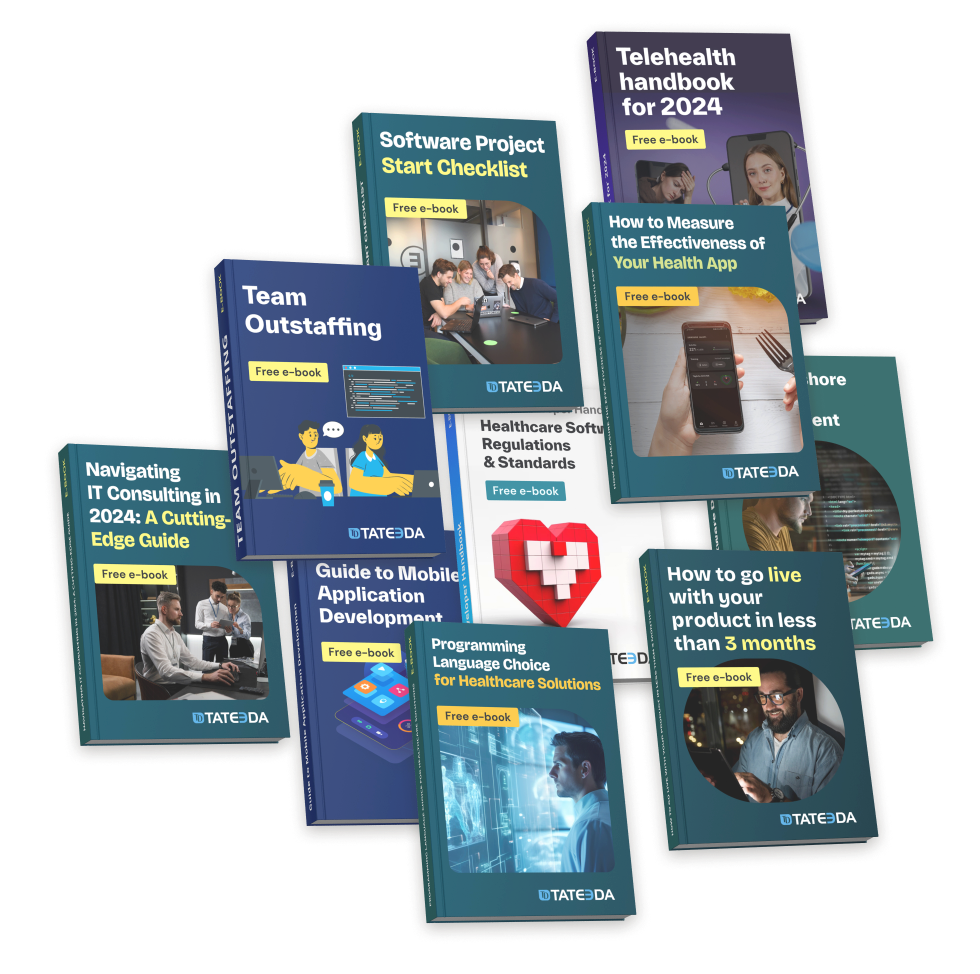AI in Medical Diagnostics: Enhancing Accuracy and Speed In Healthcare

This article will help you explore the benefits and significance of AI-powered diagnostics in healthcare. Additionally, you’ll learn about various methods for implementing artificial intelligence in medical diagnosis including enhancing your current or future software systems with AI platform integrations provided by popular cloud service vendors.
The rise of AI in healthcare is like upgrading an old road network into a swift, efficient superhighway, making the system faster and reducing medical errors. For example, AI has become a leading trend in telemedicine technologies, enhancing both diagnostics accessibility and the quality of remote care.
Just like traditional roads can slow down travel with outdated routes and congestion, traditional healthcare methods rely on manual processes and human judgment. While crucial, these are often limited by individual biases and a finite scope of accessible information, unlike AI in medical diagnosis and treatment.
As AI technology becomes more sophisticated and affordable, major players like IBM Watson Health, Google Cloud, and Microsoft Azure are providing platforms that equip healthcare providers with tools for everything from disease diagnosis to predictive health analytics. This integration is somewhat like discovering a Swiss Army knife when all you needed was a spoon—modern medical technology trends give healthcare providers capabilities they didn’t even know were possible.
“AI has moved beyond experimentation—50% of organizations now use AI in two or more functions, and 27% are implementing it across three or more. This shift is a clear sign that AI has become essential for driving operational efficiency.”
— Slava K., CEO of TATEEDA
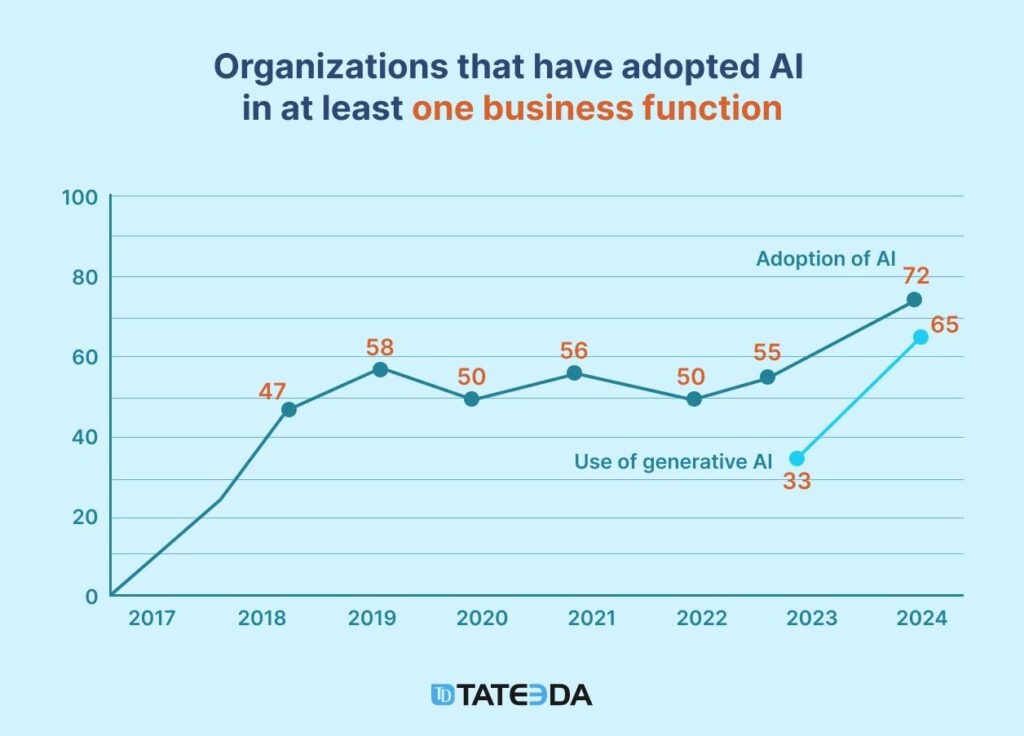
What Aspects Drive the Implementation of AI-Powered Diagnostics in Healthcare in the United States?
- Data-Driven Decision-Making: In 2024, AI systems significantly enhanced decision-making accuracy in healthcare, boosting it by over 30% by analyzing vast data sets to provide timely insights for diagnostics and therapeutic outcomes. These advancements have led to quicker diagnostic processes, more tailored therapies, and streamlined hospital operations.
- Precision in Analysis: AI has increased diagnostic precision, improving early-stage cancer detection rates by 40%. This enhanced accuracy allows for timely intervention, significantly benefiting patient outcomes, especially for conditions where early diagnosis is critical.
- Scalability: AI-driven healthcare diagnostics allows healthcare systems to manage higher diagnostic volumes efficiently, making it more affordable for patients and healthcare facilities. By reducing patient wait times by up to 30%, AI facilitates faster diagnoses, freeing medical staff to focus more directly on patient care in high-demand environments.
| Why are we confident in discussing the implementation of AI in medical diagnostics? TATEEDA is a custom software development company based in San Diego, active since 2013, with skilled R&D resources in various locations. We are well-versed in HIPAA and CCPA compliance and have partnered with numerous U.S.-based healthcare companies, including one of the largest providers of travel nurses. Our senior software engineers offer integration of cloud-based services like AI/ML and Big Data solutions for Healthcare businesses, which can be integrated into various health software systems to enhance functionality, deepen insights, and accelerate workflows. If you need immediate consulting, please let us know ⇒ |
Table of Contents
What Are the Current and Future Trends in AI for Medical Diagnostics?
In 2024, the AI market achieved a significant milestone, escalating to over $184 billion—a sharp rise of nearly $50 billion from the previous year. Experts predict this momentum will not only continue but also accelerate, with estimates suggesting that this sector of the digital health solution market could exceed $826 billion by 2030.
“For healthcare and health tech, we’re at a pivotal moment. As the industry increasingly leans into AI-driven operations, those without AI integration will likely fall behind. Now is the time to embrace AI-powered diagnostics for anyone aiming to lead in this evolving landscape.”
— Andrew G., Software Architect at TATEEDA
In 2024, AI-focused investments accounted for roughly 33% of all funding in the digital health sector, notably driving progress in diagnostics and oncology. Additionally, the financial allocation for AI and machine learning technologies in healthcare is on a notable rise, projected to almost double from 5.7% in 2022 to 10.5% by 2024.
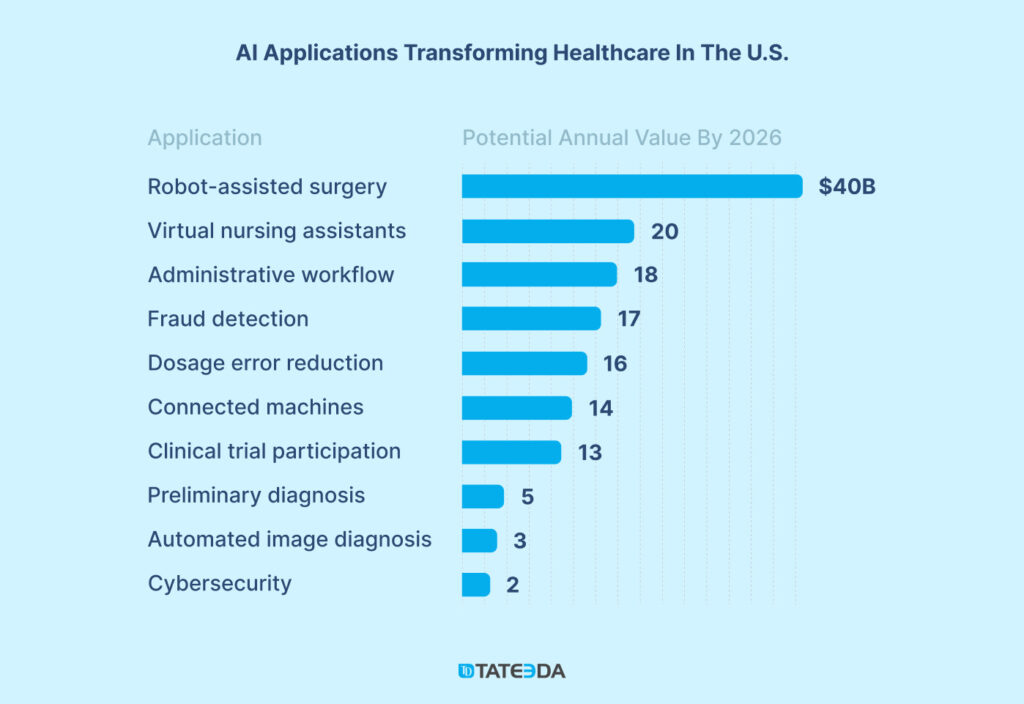
The said financial increase reflects a steady, strategic enhancement of technology integration in healthcare, highlighting the sector’s evolving approach to addressing complex medical challenges with popular AI-aided software solution types.
To support our claim that AI in medical diagnosis and treatment is becoming a powerful investment focus, see this table highlighting recent fundraising successes of three AI-driven projects that have garnered significant trust and resources.
| Company | Funding/Investment | Focus Area | Year |
| Tempus | $1.3 billion in funding, backed by major investors such as Baillie Gifford, Novo Holdings, and Google Ventures, to expand its AI-driven precision medicine capabilities, focusing on cancer diagnostics and personalized treatments. | AI tools for precision medicine, including cancer diagnostics and tailored treatment plans. | 2024 |
| Rad AI | $50 million, raised in a round led by Gradient Ventures (Google’s AI investment fund), with participation from UP2398 and Precursor Ventures, to further develop AI platforms that enhance radiology workflow. | AI for radiology, including automating imaging workflows and improving report accuracy. | 2024 |
| Abridge | $212.5 million total funding, with a recent $150 million Series C round from Insight Partners and T. Rowe Price, aimed at accelerating AI-driven medical documentation solutions. | AI-enhanced medical documentation, streamlining note-taking and transcribing health data. | 2024 |
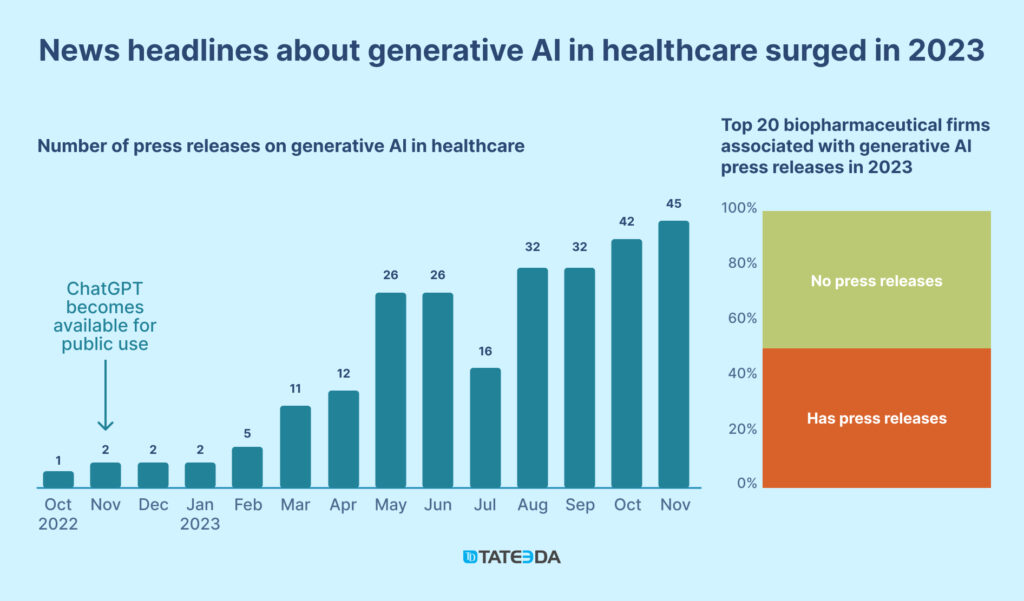
How AI-Driven Healthcare Diagnostics Improve Accuracy
Custom AI agents & assistants are making their mark by transforming how we look at medical images—from X-rays to MRIs. Adding AI gives superpowers to diagnostic tools, allowing them to see things the human eye might miss. This not only speeds up the diagnostic process but significantly reduces the chances of misdiagnosis, bringing a new level of reliability to patient care.
| ❓ Is AI infallible in delivering medical diagnostics? AI in healthcare diagnostics brings both promise and risk, especially regarding diagnostic errors and health disparities. Research shows that AI can unintentionally reinforce biases due to non-diverse training data… For instance, algorithms trained on limited demographics may overlook critical health issues in certain groups, such as the underdiagnosis of kidney disease among Black patients. Additionally, AI models that predict high-risk care needs based on healthcare costs may misinterpret needs in minority populations, leading to unequal care recommendations. To reduce these risks, it’s essential to use diverse, inclusive data and regularly audit AI systems for bias. Broadening patient demographics in AI training and implementing bias checks can create diagnostic tools that perform more equitably across all patient groups. |
Recent studies indicate that AI accuracy in diagnostics is showing notable improvement. For instance, the AI diagnostic tool GPT-4 Medprompt achieved an accuracy rate of 90.2% on the MedQA benchmark in 2023, reflecting a 22.6 percentage point increase compared to the previous year. This significant progress highlights the enhanced capabilities of AI in clinical knowledge and diagnostic support, particularly for complex medical conditions.
Moreover, Stanford Medicine’s research on AI in skin cancer diagnostics showed that AI assistance improved the accuracy for healthcare practitioners, raising diagnostic sensitivity from around 75% to 81.1% and specificity from 81.5% to 86.1% when compared with diagnoses made without AI aid. Although seemingly modest, this improvement can be critical in early and accurate cancer detection, particularly for non-specialists.
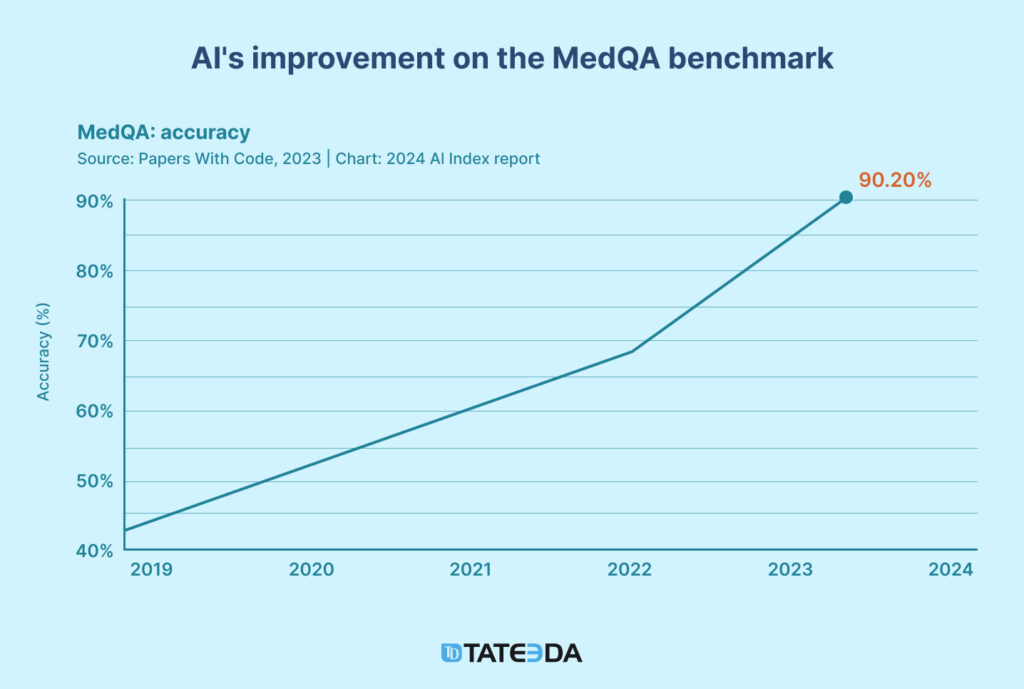
AI for Accelerating Diagnostic Speed
AI isn’t just diligent; it’s fast. It’s transforming diagnostic workflows by reducing what once took hours of human effort into minutes of machine processing.
“AI-powered tools in radiology are game-changers—cutting MRI analysis time by 30% and slashing report processing by half. It means patients get results faster, so treatments can kick off sooner.”
— Victor K., Data Engineer at TATEEDA
One 2023 study by the Radiological Society of North America found that artificial intelligence in medical diagnostics could decrease spine MRI exam durations by 70% without compromising image quality. These advancements allow critical diagnoses to happen faster, giving patients quicker access to necessary treatments and enabling earlier recovery.
Personalized Treatment Plans and Predictive Analytics
AI is refining healthcare diagnostics by crafting precise, personalized treatment plans, notably reducing hospital readmissions for chronic illnesses by as much as 40%. This leap forward is propelled by AI’s meticulous analysis of individual health data, encompassing everything from vital signs to medical histories, lifestyles, and genomic profiles. These insights empower healthcare providers to implement finely tuned interventions, custom-crafted to meet the granular specifics of each patient’s health needs.
In the field of oncology, groundbreaking collaborations, such as the partnership between IBM Watson Health and the Mayo Clinic, are tapping into AI’s potential to develop treatment strategies meticulously aligned with the unique genetic makeup and lifestyle of cancer patients, leading to markedly enhanced outcomes.
“This approach isn’t just changing the game; it’s reshaping lives, especially for those battling diabetes and heart disease. By personalizing drug regimens to fit each patient’s unique profile like a glove, we’re seeing a real boost in adherence and a significant uplift in patient satisfaction. It’s about offering a new lease on life.”
— Anastasia M., Tech Lead at TATEEDA.

Implementing AI in Healthcare Diagnostics: Methods, Challenges, and Costs Explained
Implementing AI in healthcare diagnostics demands a deep understanding of cloud architecture, sophisticated code refactoring, and structuring capabilities, alongside proficient API integration and diverse engineering skills. Below, we outline the essential steps and the requisite technical expertise needed at each stage to ensure successful AI deployment within the healthcare industry.
| Step | Technologies/Skills Required |
| 1. Define the Use Case and Objectives | In-depth expertise in healthcare diagnostics and a clear understanding of AI goals (e.g., early detection or personalized treatment) to ensure alignment with HIPAA and regulatory standards. |
| 2. Data Collection & Integration | Skills in data engineering, use of ETL (Extract, Transform, Load) tools, and integration with diverse data sources like EHRs, using APIs to unify structured and unstructured data from medical systems. |
| 3. Data Preprocessing | Proficiency in data cleaning, feature engineering to capture diagnostic patterns, and NLP for processing clinical notes. Expertise in preparing high-quality image data for model training is also essential. |
| 4. Model Selection and Development | Familiarity with machine learning frameworks (TensorFlow, PyTorch) and algorithms tailored to diagnostic accuracy, with a focus on adapting models to meet healthcare requirements. |
| 5. Model Training and Validation | Access to extensive, labeled healthcare datasets, use of high-performance GPUs for speed, and cross-validation skills to prevent overfitting while achieving reliable model results. |
| 6. Compliance and Security | Strong knowledge of healthcare regulations (HIPAA, GDPR), secure data handling techniques, and advanced cybersecurity skills to safeguard sensitive patient data. |
| 7. Model Deployment | Cloud platforms (AWS, Google Cloud, Azure) are used for scalable deployment, MLOps tools are used for managing the model lifecycle, and containerization is used (Docker, Kubernetes) for reliable deployment across environments. |
| 8. Integration with Healthcare Systems | API development skills to connect seamlessly with EHRs, knowledge of interoperability standards (e.g., HL7, FHIR), and user-centered design skills to ensure usability within healthcare workflows. |
| 9. Continuous Monitoring and Improvement | Expertise in real-time monitoring, implementing feedback loops, and A/B testing to optimize model accuracy. Skills in iterating based on clinical data are vital for ongoing improvements. |
| 10. User Training and Support | Ability to create comprehensive training materials, onboard clinical staff to effectively use AI, and provide technical support tailored to healthcare settings, ensuring smooth integration with clinical workflows. |
Concerning costs, implementing AI in healthcare diagnostics with average American IT companies can vary widely depending on the scope and complexity of the project. Basic AI integration, such as data analysis tools, typically starts around $50,000, while more advanced implementations—like AI-powered diagnostic imaging or predictive analytics for personalized treatment—can range from $100,000 to over $500,000.
The total cost is influenced by data processing requirements, regulatory compliance (such as HIPAA), and the need for ongoing support and maintenance. Although these investments can be significant, they hold the potential for high returns by improving efficiency, diagnostic accuracy, and patient outcomes.
The Final Word
AI in healthcare and medical diagnostics is more than just a technological advancement; it’s a monumental transformation in delivering medical care. By accelerating diagnostics, personalizing treatments, and enhancing operational efficiency, AI-powered diagnostics are paving the way to treat diseases that once seemed nearly incurable. However, realizing these benefits requires a careful, ethical approach to ensure patient rights and trust.
At TATEEDA, we manage the full cycle of healthcare software development services with a focus on AI integration:
- Project Management: From design through implementation
- AI Integration: Advanced AI components for healthcare
- Cloud Architecture: Scalable, healthcare-specific solutions on AWS, Azure, or Google Cloud
- API Integration: Seamless data exchange with existing systems
- Engineering: Code structuring, refactoring, and backend optimization using .NET, Node.js, and more
- Compliance: Adherence to HIPAA and regulatory standards.
As we innovate alongside healthcare providers, the future of healthcare promises to be smarter, safer, and more responsive. With AI as a driving force, TATEEDA is committed to leading this journey, delivering secure, patient-centered solutions that redefine healthcare.
Want to Integrate AI into Your Healthcare Processes?
Our team has been building health tech systems since 2013, and we’re ready to share our expertise and skills with you.




